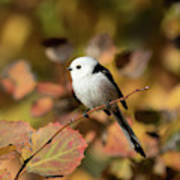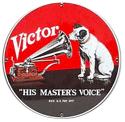|
Kind of a weird theory-adjacent question. Whatís the term for the interplay between parts and voices, and the narrative it forms over time? As I continue to make and listen to music, Iíve noticed that you can think of quite a few compositions as a dialogue or a conversation of sorts. Meaning that each part or voice puts forth their particular musical idea that is then responded to in some way by another voice. You hear this a fair bit in classical music and in film scores, but Iíve heard it in prog rock, metal, video games, and early ambient/cosmic music. Iíve done some googling, but I canít nail down one single concept that refers to this. Hereís a few good examples of what Iím talking about. Pay attention to how each part enters the song and how everything else reacts: https://youtu.be/X2b8_eZtjvo https://youtu.be/AsG3sw51yYI and https://youtu.be/Q9ieYLHc1fQ https://youtu.be/iu_YVswb3p4 https://youtu.be/8OZCyp-LcGw https://youtu.be/czaNPWhil0c (and, of course:) https://youtu.be/mYdf0yqK_Fc Itís not quite call and response, thatís kind of a special case of the general behavior Iím thinking of. Itís not voicing either, thatís more to do with harmonic distribution. Voice leading could be seen as a parallel version of this, but what Iím thinking of is more sequential and based in cause-and-effect. This is clearly a thing, I just donít know the name. Pollyanna fucked around with this message at 20:07 on Feb 13, 2023 |
|
|
|

|
| # ? May 3, 2024 06:20 |
|
my instinct is to say that this phenomena is a bit too vague to be a singularly named compositional device. like one answer would be "that interplay is simply what a very good orchestrator/producer/arranger does when they have mastery over a large timbrel palette" I'm sure if you read through a couple different treaties on orchestration, you'd find this discussed and named within the context of aesthetic arguments, and not necessarily in agreement with one another, but this area is admittedly outside of my wheelhouse
|
|
|
|
Counterpoint has historically had some very narrow definitions, but I think you could call what youíre trying to describe counterpoint.
|
|
|
|
the allusions to dialogue made me think of Form Analysis more than contrapuntal writing, i.e. Antecedent & Consequent Phrases https://www.youtube.com/watch?v=Ln272HHu3Uc
|
|
|
|
The intertwining of the melodies and letting them build off each other is what makes me think counterpoint, although in fairness itís a reaaaallly broad definition of counterpoint. Is the end part of We Donít Talk About Bruno a good example of what youíre trying to describe, Pollyanna?
|
|
|
|
I think Counterpoint is more coherent in narrower contexts. I would use Polyphony in a broader sense
|
|
|
|
Thatís about as far as I got, yeah  This seems so vague and broadly-encompassing that I think this: This seems so vague and broadly-encompassing that I think this:webcams for christ posted:like one answer would be "that interplay is simply what a very good orchestrator/producer/arranger does when they have mastery over a large timbrel palette" is probably the answer. Itís just something that sounds good and is cool in music. Itís not counterpoint cause itís not a tonality thing, more of a structure thing. Hawkperson posted:Is the end part of We Donít Talk About Bruno a good example of what youíre trying to describe, Pollyanna? Itís impressive for sure, but Iím thinking more like the beginning of the song where the melody is split between the coupleís two distinct timbres. The talking between the two is a pretty literal example of what Iím thinking of, but it doesnít have to be actual speech. webcams for christ posted:the allusions to dialogue made me think of Form Analysis more than contrapuntal writing, i.e. Antecedent & Consequent Phrases This is getting close, but antecedent and consequent involves one voice evolving over time, whereas Iím talking about multiple voices and the decision to play one, the other, or both at any given time. webcams for christ posted:I think Counterpoint is more coherent in narrower contexts. I would use Polyphony in a broader sense Polyphony might be the closest term for it. That and general part-writing. Iíll do some reading and watching - thanks!
|
|
|
|
Yeah, these are none very complete definitions for what you are referring to in context. But this is true for a lot of musical terms. Context is probably the most important thing in music, context. It applies all over to the point of annoyance in that we probably should have better terms for things but we donít. Polyphony could apply here, but youíre likely to have a search engine return synthesizer things than examples or articles that have the bugs under the rock youíre trying to look for. Polyphonic texture might get you a bit closer. Counterpoint applies but searching this will definitely lead you towards lots of classical things. But strictly speaking, its likely the most correct, just not very focused for a modern context u less we are talking about scores. Quodlibets might get you sort of close but that term is so dusty and old and out of fashion that it might not get you anywhere at all. But maybe searching for something like modern counterpoint and omit results that have the term ďclassicalĒ might narrow things down. But with a lot of musical things, if your goal here is to fully understand the technique, as youíve encountered it in your specific examples so that you can wield it yourselfÖthe most direct and potentially only available route at hand is to learn the parts, figure out why they work both in terms of the rest of the harmony, and harmonic rhythm, and then use it in you own compositions a lot until you build enough intuition to just have it happen on its own when you want.
|
|
|
|
|
Unrelated: this is a good example of metric modulation. https://youtu.be/6Tu5tLE4flc
|
|
|
|
Pollyanna posted:Kind of a weird theory-adjacent question. Whatís the term for the interplay between parts and voices, and the narrative it forms over time? it sounds you're thinking of strictly common era contrapuntal voice leading when you're defining voicing and voice leading because the thing you're talking about is also just good voice leading at its core, from what I can see, along with orchestration and timbral/dynamic stuff voiceleading matters a lot and is a skill you can build forever
|
|
|
|
I'm not sure if this should go in the guitar thread or here, but it seems more theory related so here goes. My guitar teacher and I are working on song analysis and transcribing. I'm making slow progress, but I'm getting there. I've been working out the key for a song then just trying all the chords in the key to work things out. Now we're advancing to recognizing chord progressions. ie "That sounds like a I-V progression." "That's a I-IV" I'm having a lot of trouble with it. What are some strategies to developing this skill? Or is it just listen to chord progressions until I figure it out?
|
|
|
|
mostly youíll get it from repetition and practice. but, letís seeÖ if you play them back to back, do they sound different to you? in what way? putting a word or feeling to it can help. also finding a memorable song that uses the change can be helpful. another way is listening for the leading tone in I - V. itís a super distinct sound. eventually youíll be able to hear the half step motion that wants to resolve to the root. maybe listen to some country and/or blues as well, they put I - IV and I - V front and center in obvious ways. check out Ernest Tubb maybe
|
|
|
|
a.p. dent posted:mostly you’ll get it from repetition and practice. but, let’s see… They do feel different, but the main problem I'm having is that I-V in C sounds completely different to I-V in A for instance. Or any two keys really. I just picked those at random. I can't hear the similarity. So far I can really just go "This chord sounds higher/lower than that chord."
|
|
|
|
Travic posted:They do feel different, but the main problem I'm having is that I-V in C sounds completely different to I-V in A for instance. Or any two keys really. I just picked those at random. I can't hear the similarity. So far I can really just go "This chord sounds higher/lower than that chord." What you're listening for is the same space between the notes, not the actual specific frequencies of the notes.
|
|
|
|
Oh, interesting. I wonder if you have perfect pitch
|
|
|
|
Travic posted:They do feel different, but the main problem I'm having is that I-V in C sounds completely different to I-V in A for instance. Or any two keys really. I just picked those at random. I can't hear the similarity. So far I can really just go "This chord sounds higher/lower than that chord." okay, here are a few things to try getting this out of the way first: if you're doing this with open chords on guitar, it'll be harder to hear, because you'll be playing different inversions which gives them a different quality. if so, try using the same moveable bar chord form moved up the neck, or a capo. sometimes you need to approach things from many different angles before it starts to stick. it can be easier to hear chords in context, so try these common progressions: I - vi - IV - V - I (C - Am - F - G - C, G - Em - C - D - G etc). make sure you hit the resolution at the end - V - I is super noticeable and strong. compare that to: I - IV - I (C - F - C, G - C - G). to my ear this is a less "triumphant" sound. you can even put them in context like I - IV - I - IV - V - I, so you can hear the different resolutions to I back to back. you can also try interval ear training. https://www.musictheory.net/exercises/interval or Tenuto on your phone. change the settings so you're ONLY working on P4 and P5 intervals, and see if you can drill them until you hear a difference. having a reference song for intervals is important, for both ascending and descending versions of the interval. i use Amazing Grace (P4 ascending), Twinkle Twinkle Little Star (P5 ascending), Mozart's Eine Kleine Nachtmusik (P4 descending), and Petzold's Minuet in G (P5 descending). you can find more examples here: https://www.earmaster.com/products/free-tools/interval-song-chart-generator.html the reason to do this is, once you can recognize the P5 movement, you'll be able to hear it within the chords. it can take a long time to get it! oh, you can also take songs you already know that have these changes, and use the capo to change key. see if you can still hear the changes that way.
|
|
|
|
Thanks for the tips everyone. I was actually using open chords so I'll switch to bar chords now and give those interval training strategies a try. I can kind of hear if a chord is "far away" from another one, but it's early days. Eventually we'll get to the other progressions. My teacher just recommended these two to start with.
|
|
|
|
as usual, mr dent has provided great advice! in the past i used an android app to train my ear to hear different chord progressions. i don't see that on musictheory dot net / tenuto, and i don't remember which app i used. but i was able to use web search to find this one for you: https://tonedear.com/ear-training/chord-progressions it's cool to use a game like this, because it lets you train your ear when you can't use your instrument. even if you have your guitar at hand, it can be nice to set it down and just focus on your ear sometimes.
|
|
|
|
Helianthus Annuus posted:as usual, mr dent has provided great advice! Oh that's a nice way to simplify things down so I can start small. Thank you.
|
|
|
|
not sure if the op is still being updated or whatever but i came across alan belkin's youtube channel recently and it's really good https://www.youtube.com/@alanbelkin9272/videos i recognized the name because i'm always on the lookout for theory/composition books to read and his name comes up often since he's written a few books that are often recommended as good starting points. the videos are pretty much formatted like a lecture in an actual class, but by a good theory teacher-- so if you're me and really just miss being in music school and dont really give a poo poo about beato telling you how to get the led zeppelin sound, it's good
|
|
|
|
thanks for the link, land grabber -- cool stuff
|
|
|
|
can anyone recommend a good aural skills practice routine? i want to become fluent in music and just think that way in my brain before it's too late and i want to get there. just not sure what all to do and how much time to spend on it.
|
|
|
|
can't give a complete routine, but some things i've done: 1) solfege singing / reading practice do this without an instrument. it's best done with a progressive book that introduces material with easier intervals first. i used this book, which is free / open source: https://www.lightandmatter.com/sight/sight.html 2) playing scale exercises with simultaneous singing get a good collection of scale exercises (aaron shearer Scale Pattern Studies for Guitar is good), and play them while simultaneously singing the notes. bonus points if you sing the solfege syllable and/or scale degree. you want to avoid exercises that are repetitive or predictable so that you're not doing them by rote. 3) playing scale exercises with audiation a bit harder: play scale exercises and make sure you're hearing the note before playing it i started this stuff in my 20s & 30s, so it's not like i can instantly hear any interval, but at this point i have a good enough ear to figure out most songs. certain intervals will jump out at me and i'll be 90% sure of what they are. just takes a ton of practice!
|
|
|
|
in the midst of my second semester of actual theory classes, writing counterpoint loving sucks and i need to kvetch about it. having all 5 species in a week is brutal, especially with my weak sheet reading ability; it literally takes me an hour to write 12 measures of anything past 1st species, and i still struggle with that. cursing Herr Fux rn
|
|
|
|
Was listening to the Secret of Mana soundtrack, and one of the tracks happens to have a few distinct melodies running alongside each other. Most notably beginning at 0:08, 1:15, and 1:29: https://youtu.be/eYW-xIksgew It works, and I donít understand why. Whenever I run more than one melody at a time, it sounds overly busy and clunky. But here itís like the most natural thing in the world. Why does this sound good despite having like 4 or 5 voices with their own lines at a time? Is there more to it than just writing melodies in the same scale or key?
|
|
|
|
Pollyanna posted:Was listening to the Secret of Mana soundtrack, and one of the tracks happens to have a few distinct melodies running alongside each other. Most notably beginning at 0:08, 1:15, and 1:29: this is the magic of counterpoint! the rules of classical counterpoint are designed to allow for this many voices with distinct melodies to exist independently without clashing or disappearing into each other. check out Bach fugues for many, many examples. too big a topic to get into in a post (and i don't know enough about it), but the book i used to learn this stuff was Music Theory and Composition by Stone.
|
|
|
|
i wanted to learn how to communicate my songs to potential band mates, so i picked up a book about the nashville number system. itís cool! primer on the basics: https://www.sweetwater.com/insync/the-nashville-number-system-demystified/ (a fun beatles tune to try out, if you like) a side effect i wasnít expecting is seeing how much i DONT know songs. ill switch to another key and wonít be able to find the melody note. this is a great way to practice that - write out the chart, then run through the song in a whole bunch of keys. i think you could pick up this skill really quick with some practice! just doing this a bit is helping me remember which scale degrees are what in what key and all that. a.p. dent fucked around with this message at 14:33 on Jun 30, 2023 |
|
|
|
I think I know the answer here but wanted to put it out there to get confirmation. I'm a DJ, and I do a lot of harmonic mixing - you know, moving around the circle of fifths, mixing in adjacent keys so there's minimal harmonic clashing. Can you mix tunes that aren't exactly in perfectly adjacent keys? I've got a transition that sounds like it MOSTLY works, but the tunes are in Emin and Dmin; two fifths apart. These keys should still theoretically work together since they still share _most of the same notes_, no? I mean, I'm gonna run the mix either way because I'm using My loving Ears and it mostly sounds fine, but I'm still very curious as to whether that is technically true, the "sharing most of the same notes" part. To extend this question, I guess, are there other 'more advanced" ways to harmonically mix? Obviously relative majors/minors work but I'm wondering if learning about modes and things like that will give me a leg up and expose mixing possibilities beyond just going around the circle of fifths.
|
|
|
|
The thing is considering the effect it has when you do the switch. Some people do wild augmented 4th key changes and make it work because the intent (or sometimes not) is to sound jarring for example. Going from E minor to D Minor probably feels like hitting the brakes a tad whereas going up a fifth or a second is more energetic sounding. If the D minor song is a bit more ballady or sad or just you want to bring the energy down a little bit before ramping up again in the next few songs it's okay to do that switch, the notes are rather close as you said. Lastly you just want to be careful that song 1 doesn't end on a note/chord that immediately clashes with song 2's opening which it sounds like it doesn't. Interestingly if song 1 is E minor and song 2 is D minor, it might temporarily imply the key of A minor/D Dorian if it's going from a E minor chord to a D minor chord (the iii and ii of C Major/v and iv of A minor), which gets you a fairly smooth transition to D minor really.
|
|
|
|
changing from one key to another is also called Modulation. reading up on modulation techniques may also give you some ideas, but you obviously are more limited when your songs are already composed. wikipedia has a good overview of modulation techniques found in classical music, and here is a page outlining modulation more in the context of jazz/pop "crowbar modulation" is another one not listed on either site: suddenly moving up a half-step. often as a cheesy device within songs right before the final chorus, but can be satisfying in the right contexts
|
|
|
|
One of Thelonious Monkís 2-5 voicings, spelled from low note to high note: (if weíre in Eb) F7(alt): F Eb B Eb F Bb passing note: Ab Bb7 (b9 b5 13): Bb Ab B D E G Ebmaj7
|
|
|
|
been getting into broken air conditioner music lately https://www.youtube.com/watch?v=UUlQqDlbSb0
|
|
|
|
Helianthus Annuus posted:been getting into broken air conditioner music lately hell yeah, the one in our school library was playing a clave the other day.
|
|
|
|
i keep watching videos about barry harris's 6th on the fifth but is there cheat sheet of this stuff written down somewhere? the video medium isn't efficient for when i just have a quick question that a written document would answer in a second
|
|
|
|
I don't want to start a whole 'does E# exist or not' line of discussion, because at least on the piano E# is just F. But, does it exist for other instruments? Does E# exist for say, the trumpet or flute that sound differently than an F?
|
|
|
|
For continuous pitch instruments we do try to intone an E# just a bit sharper than an F, yeah. If you come across one odds are it's the leading tone to F#, which means it sits comfortably just a few cents above the equal tempered note. And E# absolutely does exist even on fixed pitch instruments. It's in at least two key signatures!
|
|
|
|
|
E# needs to exist because if youíre in B major and want to write C#7 to F#7 (V/V to V7) if you write the C#7 as C# - Fnatural - G# it will look weird and everyone will be mad at you
|
|
|
|
a.p. dent posted:E# needs to exist because if youíre in B major and want to write C#7 to F#7 (V/V to V7) if you write the C#7 as C# - Fnatural - G# it will look weird and everyone will be mad at you I actually sorta understood that! I'm learning piano, and there is an amazing amount of music theory to be learned just by learning the loving thing. Today I got sick of not being able to learn my chords well enough and have started writing each one down on 3x5 index cards to use as flash cards. I've written out A through G, the 2 inversions and am now working on the 7 chords. I figure i'll write out 2 or so inversions for those and call it a day. But, I gotta say, writing that poo poo out, while tedious as all hell, is helping me learn the two clefts and see patterns i might not have noticed before.
|
|
|
|
Cimber posted:I actually sorta understood that! e.g. https://a.co/d/dwCywgF Pad and Two-Octave Piano Diagram Rubber Stamp
|
|
|
|

|
| # ? May 3, 2024 06:20 |
|
Cimber posted:I don't want to start a whole 'does E# exist or not' line of discussion, because at least on the piano E# is just F. But, does it exist for other instruments? Does E# exist for say, the trumpet or flute that sound differently than an F? in equal temperament instruments like a piano A♯ is "just" B♭. the key which produces that same pitch corresponds to multiple labels we've assigned to it. the B key exists just as much as the C♭, A𝄪, and H keys do.
|
|
|
























